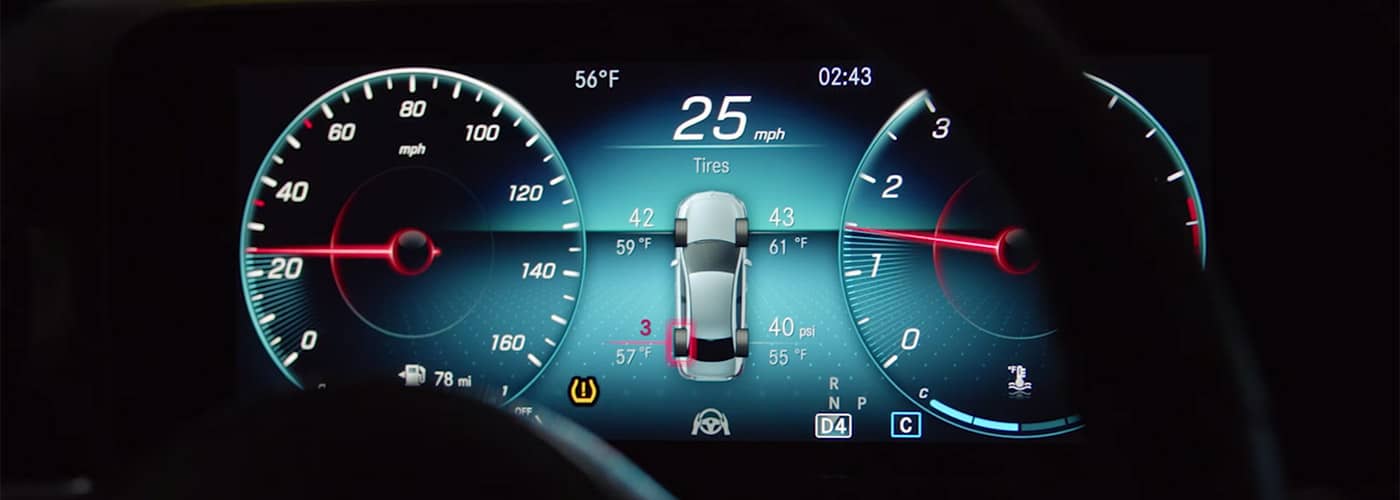The acronym TPMS, frequently observed illuminated on your vehicle’s instrument cluster, stands for Tire Pressure Monitoring System. It is an electronically-based system designed to monitor the air pressure inside your pneumatic tires. Understanding its function and importance is paramount for vehicle safety and optimal performance.
1. The Core Functionality of TPMS
At its core, the TPMS serves a singular, yet vital purpose: to alert the driver when tire pressure deviates significantly from the manufacturer’s recommended levels. This is usually indicated by a dedicated warning light, often resembling a horseshoe shape with an exclamation point inside, or a textual message displayed on the vehicle’s information screen. Early systems only warned of low pressure. Modern, more sophisticated systems can pinpoint which tire is under-inflated or over-inflated, providing granular insight into the vehicle’s state.
2. Types of TPMS Technology
There are two primary types of TPMS technologies employed in contemporary automobiles: direct and indirect systems. Each operates on fundamentally different principles.
2.1. Direct TPMS: The Sensor-Driven Approach
Direct TPMS utilizes pressure sensors mounted inside each tire. These sensors continuously measure the tire pressure and transmit this data wirelessly to the vehicle’s central control unit (ECU). This ECU then compares the received pressure values against pre-programmed thresholds. If a discrepancy is detected, the warning light illuminates, signaling the driver to take corrective action. Direct systems offer superior accuracy and can often provide real-time pressure readings for each individual tire. Furthermore, they can usually detect slow leaks or rapid deflation with greater precision.
Direct systems often require sensor replacement when the battery life expires, typically every 5-7 years. Sensor corrosion is also a potential issue in regions with harsh weather conditions, due to the galvanic action between dissimilar metals.
2.2. Indirect TPMS: The Wheel Speed Detective
Indirect TPMS, in contrast, relies on the vehicle’s anti-lock braking system (ABS) wheel speed sensors to infer tire pressure. This system operates on the premise that a deflated tire will have a smaller rolling radius and, consequently, rotate at a slightly higher speed than properly inflated tires. The ABS sensors detect these subtle variations in wheel speed and the vehicle’s computer calculates the relative tire pressures. If a significant difference is detected, the TPMS warning light will activate. Indirect systems do not directly measure tire pressure; instead, they estimate it based on wheel speed differentials.
Indirect systems are generally less expensive and require no additional hardware within the wheel assembly itself. However, they are typically less accurate than direct systems and require recalibration after tire inflation or rotation. They are also less effective at detecting simultaneous pressure loss in multiple tires.
3. Why is TPMS Important? The Benefits of Vigilance
The implementation of TPMS offers a multitude of benefits, impacting both safety and economy.
3.1. Enhanced Safety: Preventing Catastrophic Failures
Maintaining proper tire pressure is crucial for vehicle stability, handling, and braking performance. Under-inflated tires can increase the risk of tire blowouts, particularly at high speeds, due to increased sidewall flexing and heat buildup. Blowouts can lead to loss of vehicle control and potentially catastrophic accidents. TPMS provides an early warning system, enabling drivers to address pressure issues before they escalate into dangerous situations.
3.2. Improved Fuel Efficiency: Minimizing Rolling Resistance
Under-inflated tires increase rolling resistance, requiring the engine to work harder to maintain speed. This increased effort translates directly into reduced fuel economy. Studies have demonstrated that maintaining proper tire pressure, as monitored by TPMS, can improve fuel efficiency by as much as 3%, resulting in significant savings over the lifespan of the vehicle. A properly inflated tire maintains its intended shape, minimizing the contact patch and reducing friction with the road surface.
3.3. Extended Tire Lifespan: Preventing Premature Wear
Improper tire pressure can lead to uneven and premature tire wear. Under-inflation typically causes excessive wear along the outer edges of the tire, while over-inflation can lead to wear in the center of the tread. By maintaining optimal tire pressure, as indicated by TPMS, drivers can ensure even tread wear and extend the overall lifespan of their tires, reducing the frequency and cost of tire replacements. Moreover, proper inflation minimizes deformation and stress on the tire carcass, further contributing to longevity.
4. Responding to the TPMS Warning Light
When the TPMS warning light illuminates, it is imperative to take prompt action. The initial step involves checking the tire pressure of all tires using a calibrated tire pressure gauge. If one or more tires are below the recommended pressure, inflate them to the specified pressure, as indicated on the tire placard located on the driver’s side doorjamb or in the vehicle’s owner’s manual.
After inflating the tires, the TPMS light may extinguish automatically after a short period of driving. However, if the light persists, it could indicate a more serious issue, such as a slow leak, a faulty TPMS sensor, or a malfunction in the system itself. In such cases, it is advisable to consult with a qualified automotive technician for diagnosis and repair.
5. Conclusion: TPMS as a Cornerstone of Vehicle Safety
The Tire Pressure Monitoring System is an indispensable safety feature in modern vehicles. By providing continuous monitoring of tire pressure, TPMS empowers drivers to maintain optimal tire conditions, enhancing safety, improving fuel efficiency, and extending tire lifespan. Understanding the nuances of TPMS technology and responding appropriately to its warnings is a crucial aspect of responsible vehicle ownership. Vigilance regarding tire pressure is not merely a matter of convenience, but a fundamental aspect of road safety and vehicle stewardship.







Leave a Comment